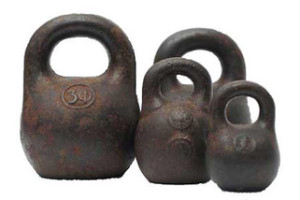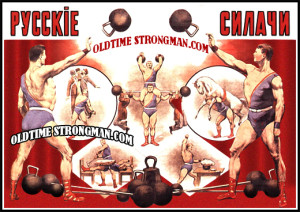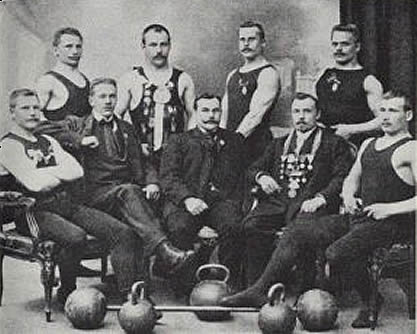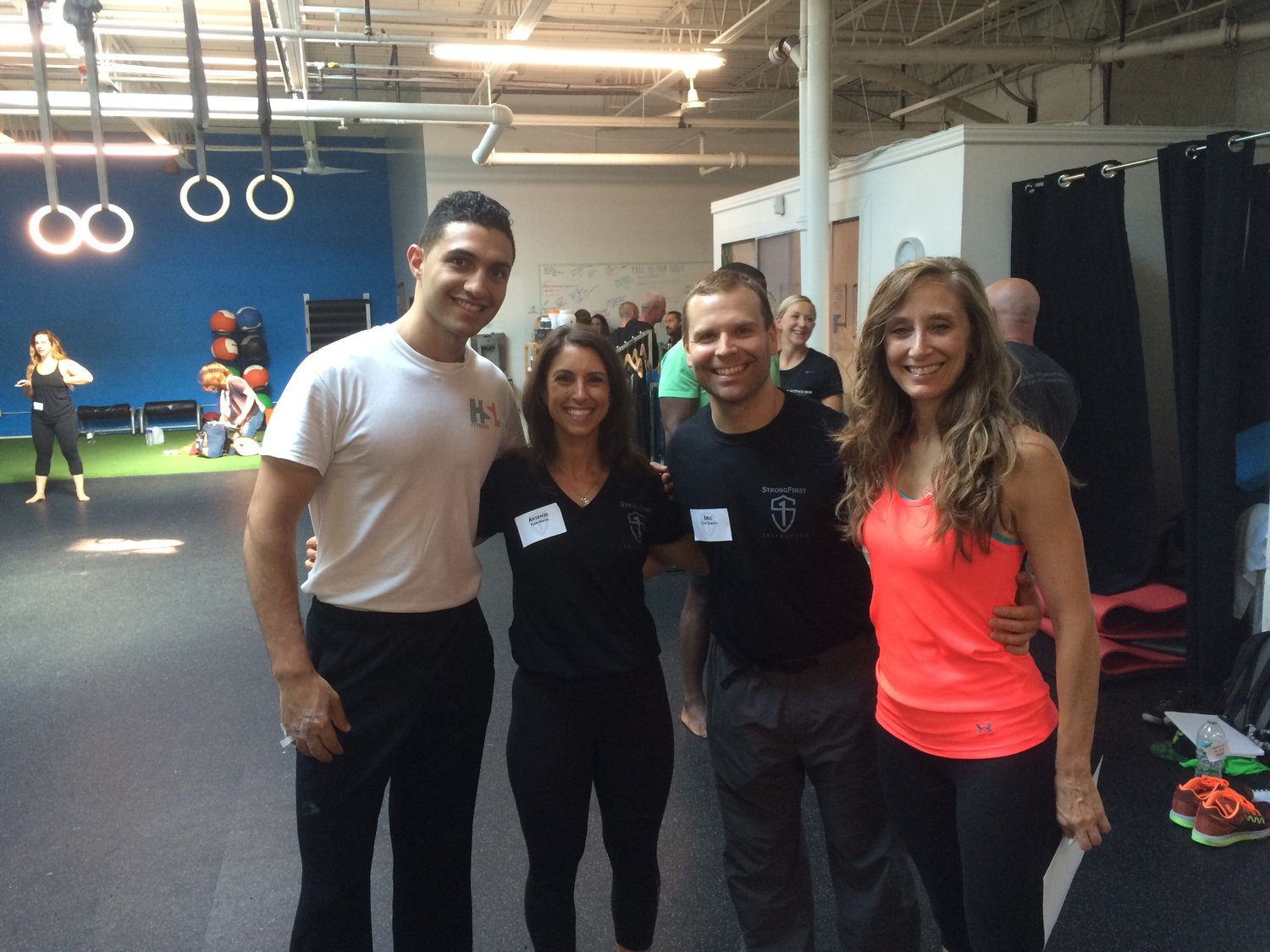A “kettlebell” or girya (Russ.) is a traditional Russian cast iron weight that looks like a cannonball with a handle. It goes centuries back.
So popular were kettlebells in Tsarist Russia that any strongman or weightlifter was referred to as a girevik, or “a kettlebell man.”
“Not a single sport develops our muscular strength and bodies as well as kettlebell athletics,” reported Russian magazine Hercules in 1913.

from www.kettlebellsusa.com
Why train with kettlebells?
Because they deliver extreme all-round fitness – and no single other tool does it better. Here is a short list of hardware the Russian kettlebell replaces: barbells, dumbbells, belts for weighted pull-ups and dips, thick bars, lever bars, medicine balls, grip devices, and cardio equipment. Kettlebells are compact, inexpensive, virtually indestructible and can be sued anywhere.

from www.oldtimestrongman.com
What makes the kettlebell design unique?
The shape and compact size of a kettlebell allow one to safely accelerate it on the way down in exercises like swings and snatches. There is a growing body of research that such “virtual force” is exceptionally effective, efficient, and safe at improving many components of fitness: dynamic strength, many types of endurance, muscle building, and fat loss.
Obviously, you cannot swing a barbell between your legs and a dumbbell encourages a stiff shoulder raise if one tries to swing it. The kettlebell’s offset “live” weight amplifies the feedback and forces one to swing it ballistically – using the hips while relaxing the arms, the way an athlete is supposed to move.
Another unique benefit of the kettlebell’s offset center of gravity is the special manner in which the shoulder is loaded in overhead lifts. This promotes mobility and stability, which sets up a foundation for extraordinary upper body strength and resilience.
Because the unique nature of the kettlebell lifts allows you to get a powerful training effect with a relatively light weight, you can replace your whole gym with a couple of kettlebells. Dan John, SFG Master Instructor and highly accomplished power athlete, has famously quipped: “With this kettlebell in my bedroom I can prepare myself for the Nationals.”
What does science have to say about kettlebells?

from www.kettlebellsusa.com
Vinogradov & Lukyanov (1986) found a very high correlation between the kettlebell snatch and jerk numbers and a great range of dissimilar tests: strength, measured with the three powerlifts and grip strength; strength endurance, measured with pull-ups and parallel bard dips; general endurance, determined by a 1000-meter run; work capacity and balance, measured with special tests.
Voropayec (1983) tested two groups of subjects in pull-ups, a standing broad jump, a 100m sprint, and a 1k run. He put the control group on a program that emphasized the above tests; the experimental group lifted kettlebells. In spite of the lack of practice in the tested exercises, the kettlebell group scored better in every one of them! This is what we call the “what the hell effect.”
The official Soviet armed forces strength training manual approved by the Ministry of Defense (Burkov & Nikityuk, 1985) declared kettlebell training to be “one of the most effective means of strength development,” representing “a new era in the development of human strength-potential.”
Kettlebells improve coordination and agility (Luchkin, 1947l Laputin, 1973), develop professional applied qualities and general physical preparedness (Zikov 1986; Griban, 1990). Kettlebells lower the heart rate and blood pressure and increase the heart’s functional capacity (Shevtsova, 1993).
Kettlebells melt fat without the dishonour of dieting and aerobics. American Council on Exercise (ACE) commissioned a study by Porcari & Schnettler (2010). The researchers concluded that in a kettlebell snatch workout the subjects “were burning at least 20.2 calories per minute, which is off the charts. That’s equivalent to running a 6-minute mile pace. The only other thing I could find that burns that many calories is cross-country skiing up hill at a fast pace… We knew it would be extremely intense. It’s a quick workout, and you do get a big bang for your buck in a very short amount of time.”
What are the different ways of using kettlebells?
The original “style” of kettlebelling was what the West knows as the “odd lifts.” Strongman stuff, like Ukrainian Ivan Sedyh bent pressing three 70-pound kettlebells – not tied together! – and similar “hold my vodka and watch this” feats.
In the Soviet times odd lifts lived on, especially in the circus, and two additional kettlebell uses developed. One was girevoy sport, or kettlebell sport, a competition for a maximal number of reps with a given weight in the snatch and jerk. It was born in 1948 when the first official competition took place.
The other was strength training for sports. Roman Moroz, the coach of weightlifting great Alexey Medvedev, explains in his 1958 book Develop Strength: “Exercises with kettlebells are a wonderful means of developing a person’s physical strength. They can be used in the training of athletes of different specialities: track and field, skiers, weightlifters, wrestlers, gymnasts, rowers, boxers, acrobats, etc.” This is what we teach at StrongFirst.
Who trains with kettlebells?
-
Champions in a widest range of sports from powerlifting to MMA to triathlon.
-
Elite military and law enforcement special operators.
-
Hard men and women from all walks of life.
Kettlebell training is not for sissies but it is not elitist. Dr. Krayevskiy, the father of kettlebells, took up training at the are of forty-one and twenty years later he was said to look fresher and healthier than at forty.
The price of admission is a strong spirit and attention to detail.

At the StrongFirst Kettlebell Instructor course Aug2015
